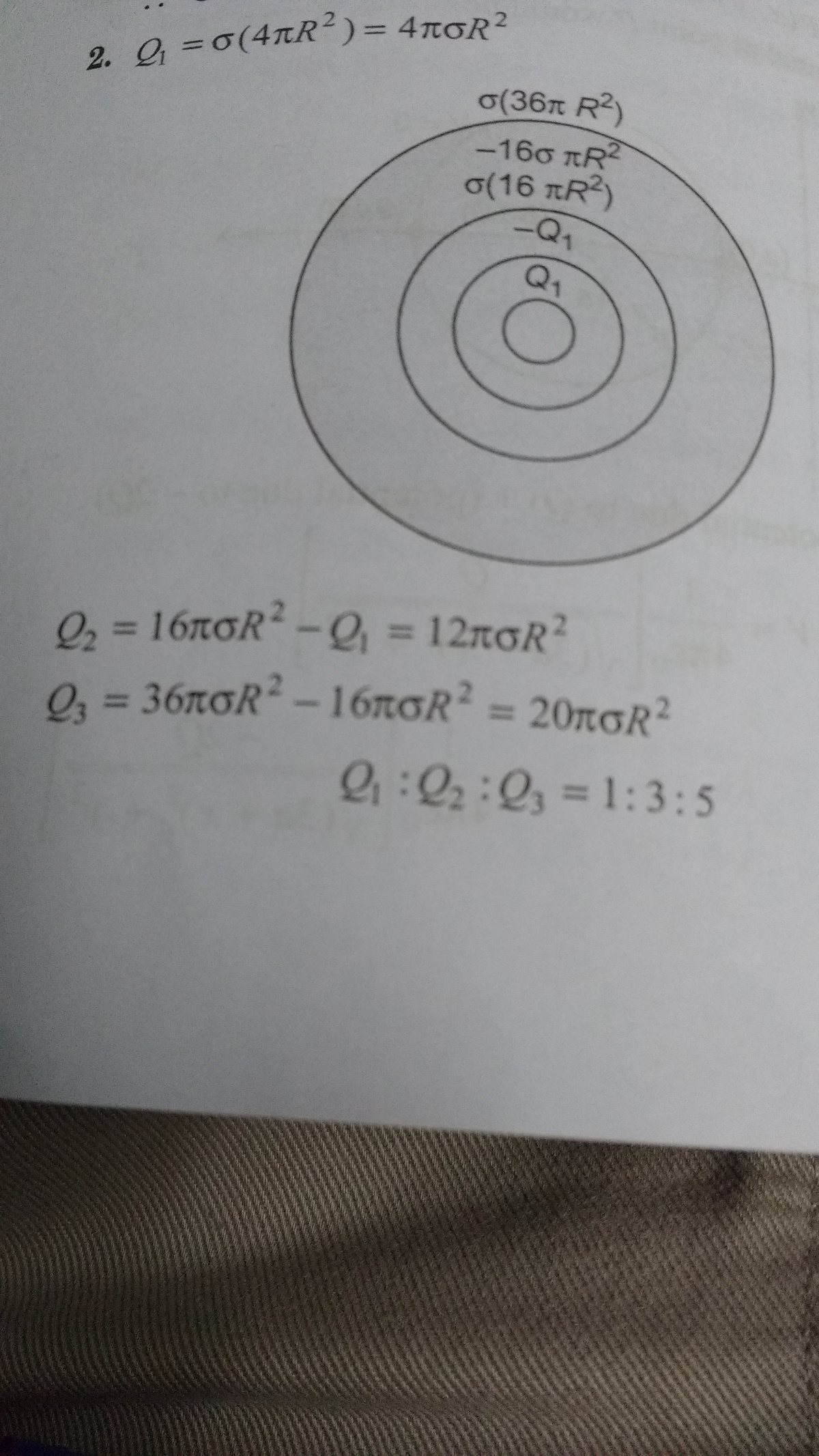Let's try with Electrostatics
Three concentric metallic spherical shells of radii R , 2 R , 3 R are given charge Q 1 , Q 2 , Q 3 .
It is found that the surface charge densities on the outer surfaces of the shells are equal.
Given that the ratio of charges given to the shells Q 1 : Q 2 : Q 3 is a : b : c , where a , b , c are coprime positive integers.
Find a + b + c .
Bonus: Generalize this for the ratio with radii m , n , k .
The answer is 9.
This section requires Javascript.
You are seeing this because something didn't load right. We suggest you, (a) try
refreshing the page, (b) enabling javascript if it is disabled on your browser and,
finally, (c)
loading the
non-javascript version of this page
. We're sorry about the hassle.
2 solutions
Absolutely correct. Tou are givkng jee 17?
Log in to reply
JEE 18. I'm the same age as you. :-)
Log in to reply
But I ll hopefully give jee 19. I am giving or given the boards 10th thia yr. I will start 11th this year. Yiu will end 11th this year?? It srems that you are fully prepared to become an iitian
Log in to reply
@Md Zuhair – Oh. Yes my 11th has ended and 12th is going to start very soon. I'm hoping to do my best with the one year I have in my pocket. You've been doing great too. When I was in 10th I didn't had the calibre that you have. Keep learning and keep practicing. You're gonna do great in the future.
Log in to reply
@Tapas Mazumdar – Haha.. I ll try. You study in fiitjee na???
Log in to reply
@Md Zuhair – Yes. FIITJEE, Raipur, Chhattisgarh.
@Md Zuhair – Btw, the twentieth problem of your set took me a lot of tries to solve. I solved it today finally and have posted a solution. :-)
Log in to reply
@Tapas Mazumdar – Actually I couldnt evem solve the problem. It is INMO problem .
Log in to reply
@Md Zuhair – Oh wow. Nice problem it was.
Log in to reply
@Tapas Mazumdar – Its not my cup of tea. I am not so bright like you . I couldnt solve it

Similar to Md Zuhair's approach but explained a bit differently.
Using Gauss's Law, we have
Φ E = ∮ S E ⋅ d S = ε 0 Q
where
So for our three spherical shells, the respective total charges are
Since the respective surface charge densities are equal, we have
4 π R 2 Q 1 = 4 π ( 2 R ) 2 Q 1 + Q 2 = 4 π ( 3 R ) 2 Q 1 + Q 2 + Q 3
Solving this system of equalities, we get
Q 1 = 3 Q 2 = 5 Q 3
Thus, Q 1 : Q 2 : Q 3 = 1 : 3 : 5 ⟹ a + b + c = 9 .
Generalization:
For shells with radii m , n and k (from the innermost being m and outermost being k ), we have
4 π m 2 Q 1 = 4 π n 2 Q 1 + Q 2 = 4 π k 2 Q 1 + Q 2 + Q 3
Solving this system of equalities, we get
Q 1 = n 2 − m 2 Q 2 m 2 = k 2 − n 2 Q 3 m 2
Thus, Q 1 : Q 2 : Q 3 = m 2 : ( n 2 − m 2 ) : ( k 2 − n 2 ) .